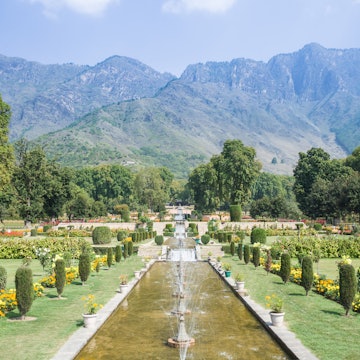
Overview
Rimmed by layers of alpine peaks, the 140km-long Kashmir Valley opens up as a giant, beautiful bowl of lakes and orchards. Tin-roofed villages guard terraced paddy fields delineated by apple groves and pin-straight poplars. Proudly independent-minded Kashmiris mostly follow a Sufi-based Islamic faith, worshipping in distinctive wooden mosques with central spires, and they are fiercely proud of their homeland. It's a stunningly beautiful place, but one wracked by political violence in recent decades.
Leave the planning to a local expert
Experience the real Srinagar & the Kashmir Valley. Let a local expert handle the planning for you.
Must-see attractions
Get a book. Get inspired. Get exploring.
in partnership with getyourguide













